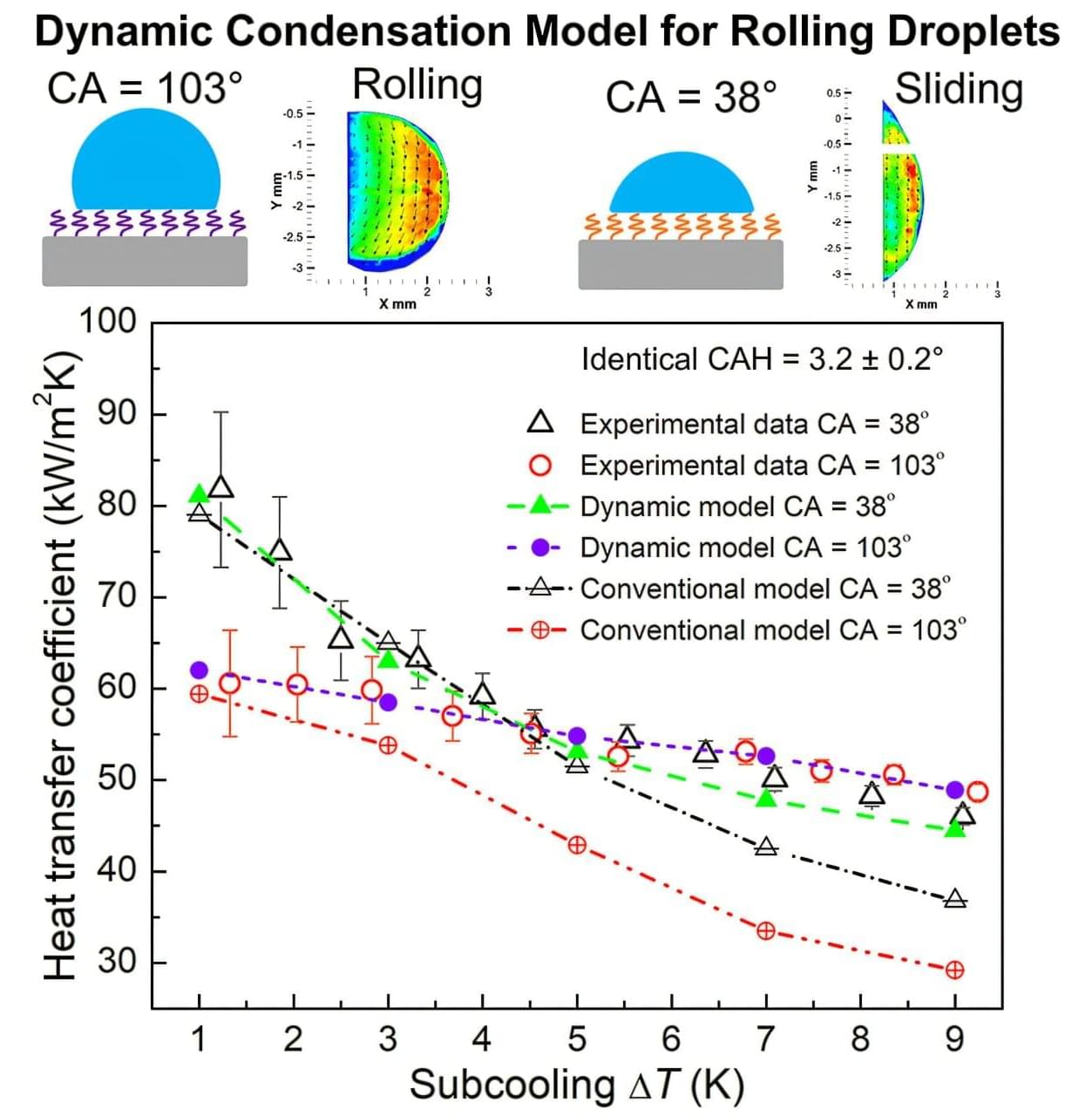When University of Texas at Dallas researchers tested a new surface that they designed to collect and remove condensates rapidly, the results surprised them. The mechanical engineers’ design collected more condensates, or liquid formed by condensation, than they had predicted based on a classic physics model.
The finding revealed a limitation in the existing model and inspired the researchers to develop a new theory to explain the phenomenon, which they outline in an article published online March 13 in the journal Newton.
The theory is critical to the researchers’ work to develop innovative surfaces for applications such as harvesting water from air without electricity.
